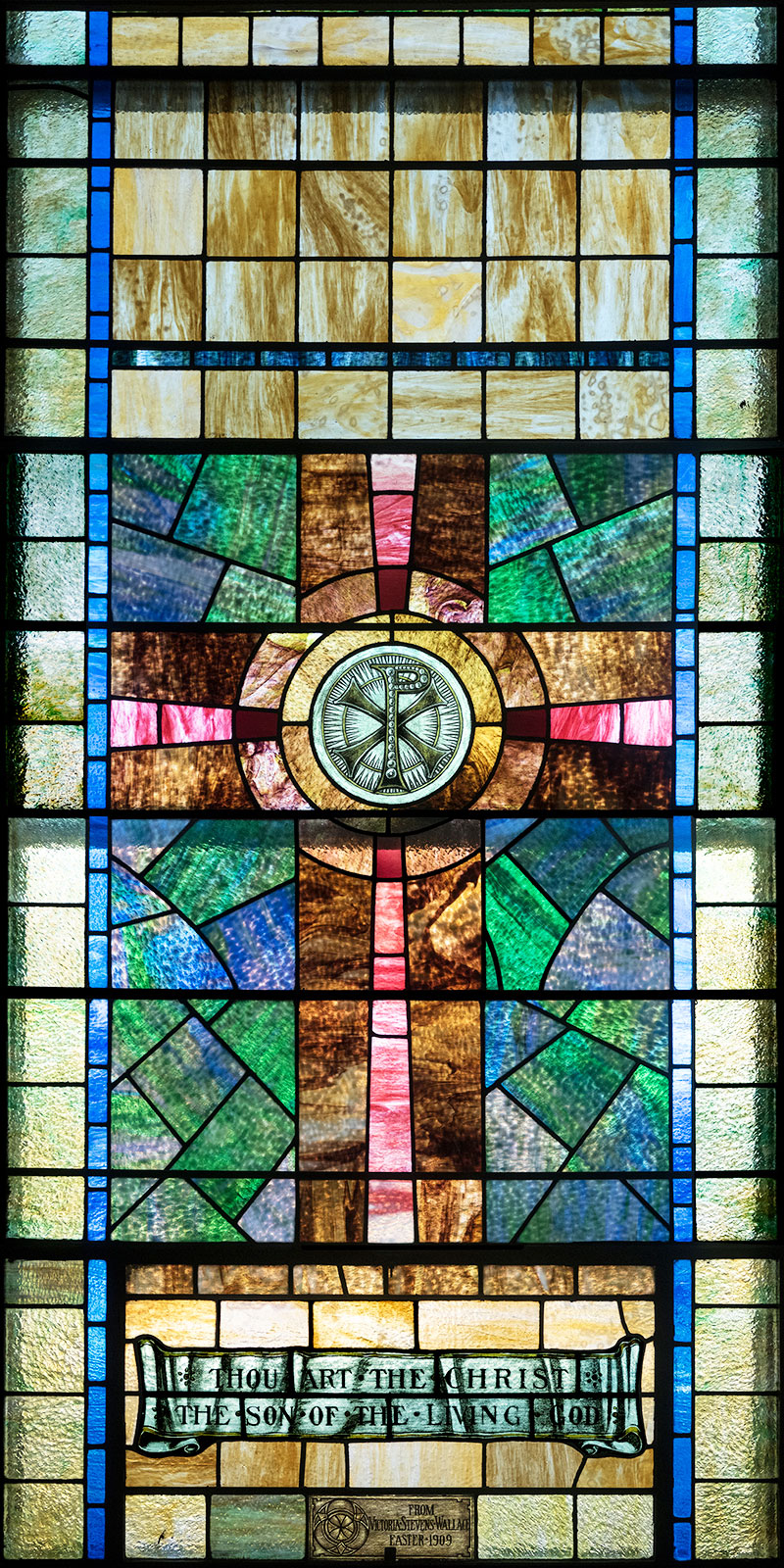
Lower Subject: Chi Rho
Inscription: “Thou Art The Christ, The Son Of The Living God”
Donor: Wellington and Victoria Stevens Wallace
Maker/Date: Charles Hogeman, Easter, 1909
Description –The window’s verse comes from Mathew 16:16. Jesus had taken the disciples outside of Galilean territory away from the crowds and Herod and asking them to confess their faith. He asks two questions”
1. Who do men say that I, the Son of Man, am?
They said, “Some say John the Baptizer, some, Elijah, and others,
Jeremiah, or one of the prophets.”
2. He said to them, “But who do you say that I am?”
Simon Peter answered, “Thou Art the Christ, the Son of the living God.”
The next part is only in Matthew where he blesses Peter and that he will be the help form the basis of the Church. He said that they were to tell no one that he was Jesus the Christ. He reveals his eventual destiny to suffer, be killed and rise on the third day.
When Peter begins to criticize him Jesus follows with “Get behind me, Satan!” You are a stumbling block to me, for you are not setting your mind on the things of God, but on the things of men. Then Jesus said to his disciples, “If anyone desires to come after me, let him deny himself, and take up his cross, and For whoever desires to save his life will lose it, and whoever will lose his life for my sake will find it.
The key thing is that Jesus is not merely a prophet but the Son of God given only by faith. He is building a new community around the 12 disciples The word “Church” used by Matthew means an assembly of believers.
Symbol – The symbol is the Chi-Rho one of the earliest cruciform symbols used by Christians. It is formed by superimposing the first two letters of the word “Christ” in Greek, chi = ch and rho = r. Although not technically a cross, the Chi-Rho invokes the crucifixion of Jesus as well as symbolizing his status as the Christ.
The earliest evidence of the Chi-Rho symbol is Constantine’s use of it on the labarum, the imperial standard, in the early 4th century CE. Lactantius, a 4th-century Christian apologist, reports that on the eve of the Battle of the Milvian Bridge in 312 CE, Constantine had a vision of God in which he was commanded to mark his men’s shields with the Chi-Rho symbol. After Constantine’s success at the Milvian bridge, the Chi-Rho became the official imperial insignia. Archaeologists have uncovered evidence demonstrating that the Chi-Rho was emblazoned on the helmet and shield of Constantine as well as those of all of his soldiers. Coins and medallions minted during Constantine’s reign also bore the Chi-Rho. By the year 350 CE, the Chi-Rho began to be used on Christian sarcophagi and frescoes.
Techniques – The Wallace windows use similar glass around center symbols arranged in five rows of stone with the central theme in the middle. Surrounding the symbol are two concentric circles of stones. Within each row are different shapes of glass. The effect is traditional without any special treatment of the glass or painting.